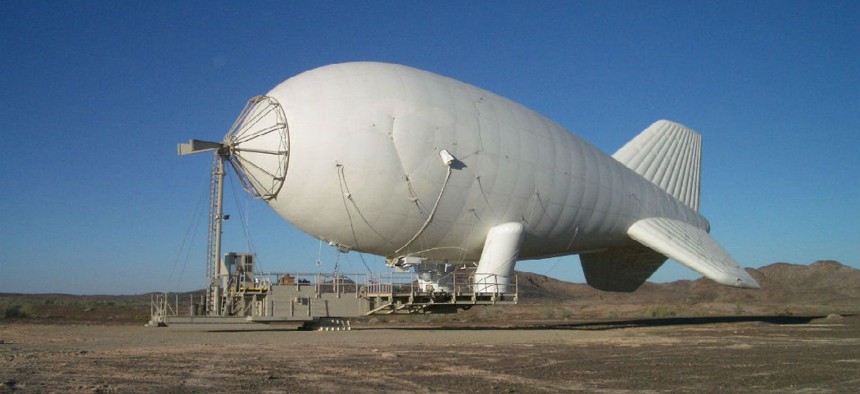Army weighs new lightweight wide area motion imagery sensor
The Kestrel KS-200 is a lightweight version of the original 170-pound Kestrel system, which has been deployed on aerostats with U.S. forces in Iraq and Afghanistan since 2011.
U.S. military services are exploring a new lightweight aerostat-mounted Wide Area Motion Imagery sensor engineered to provide ground commanders with a real-time, 360-degree video feed of relevant threat areas.
The Kestrel KS-200 is a lightweight version of the original 170-pound Kestrel system, which has been deployed on aerostats with U.S. forces in Iraq and Afghanistan since 2011.
The emerging system, which has been demonstrated to several potential military customers, leverages recent technological advances to substantially miniaturize aerial sensors and extend ranges while significantly reducing payload weight.
Lighter weight sensors are able to achieve the same or greater sensory impact and allow engineers to make better use of payload space.
Despite weighing only 80 pounds, the new KS-200 delivers the same performance as its battle-proven predecessor, according to its developers at Logos Technologies. The KS-200 can operate 3,000-feet above the ground.
“It is like live Google Earth with DVR,” Doug Rombough, Vice President of Business Development at Logos Technologies, told Defense Systems.
The existing Kestrel is mounted on large threat-detection aerostats, such as the Army’s Persistent Threat Detection System, or PTDS. The aerostat acts as a stationary long-range battlefield sensor tethered to the ground. The mission is to identify aerial and ground threats for combatant commanders. These threats can include enemy force formations and armored vehicles, as well as drones and aircraft.
“During the height of the need for ISR in Afghanistan, we were asked if we could put a day and night WAMI on an aerostat,” Rombough said.
The Kestrel-200’s 80 pounds combines a 40-pound daytime sensor and 40-pound night-capable infrared sensor.
Logos developers have already briefed the Army’s Rapid Equipping Force, as well as developers from the services Program Executive Office for Intelligence, Electronic Warfare and Sensors.
The technology is also being developed for U.S. allies and international customers, Rombough explained.
“We realized that international customers are going to want day and night. We brought the KS-200 to the Department of State to ensure the technology could be exported,” he added.
While Rombaugh did not wish to discuss interest from individual countries, he did indicate that there were potential customers in both South America and the Middle East.
KS-200 is built with computer processing technology and algorithms able to organize and distill which images are likely to be of greatest relevance to an operator. Rombough explained that the system uses “Forensic Watch Boxes” to surveil a key group of buildings without needing an operator to sit and monitor in real time.
“It functions like a server in the sky. An operator is told in real time when there is movement. They can always rewind and see what activated the electronic trip,” Rombaugh said. “It can play back any subset of that area you want to pull up on that screen using multiple windows.”
The sensor is able to gather 360-degree WAMI feeds and also adjust to more narrowly configured full motion video “soda straw” feeds as well.
“Our sensor spins to take a mosaic of pictures, with a refresh rate of 1 Hertz. This sensor is specifically designed for mounting on an aerostat which stays above the same area,” Rombough said.
NEXT STORY: Reaper to get universal weapons interface





